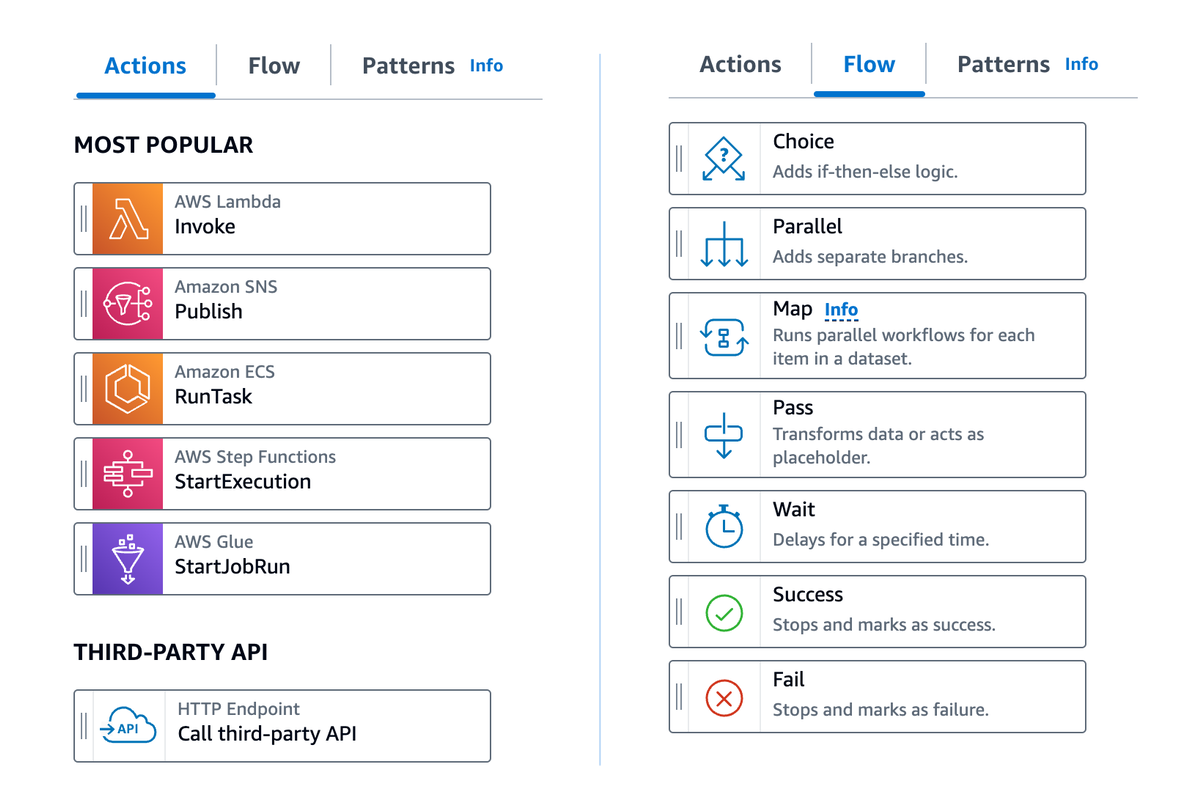Discovering workflow states to use in Step Functions
States are elements in your state machine. A state is referred to by its name, which can be any string, but which must be unique within the scope of the entire state machine.
States take input from the invocation or a previous state. States can filter the input and then manipulate the output that is sent to the next state.
The following is an example state named HelloWorld that invokes an Amazon Lambda
function.
"HelloWorld": {
"Type": "Task",
"Resource": "arn:aws-cn:lambda:region:123456789012:function:HelloFunction",
"Next": "AfterHelloWorldState",
"Comment": "Run the HelloWorld Lambda function"
}Individual states can make decisions based on their input, perform actions from those inputs, and pass output to other states. In Amazon Step Functions, you define your workflows in the Amazon States Language (ASL). The Step Functions console provides a graphical representation of your state machine to help visualize your application's logic.
The following screenshot shows some of the most popular Actions and the seven Flow states from Workflow Studio:

States share many common features:
-
A
Typefield indicating what type of state it is. -
An optional
Commentfield to hold a human-readable comment about, or description of, the state. -
Each state (except
SucceedorFailstates) requires aNextfield that specifies the next state in the workflow.Choicestates can actually have more than oneNextwithin each Choice Rule. Alternatively, a state can become a terminal state by setting theEndfield to true.
Certain state types require additional fields, or may redefine common field usage.
To access log information for workflows
After you have created and run Standard workflows, you can access information about each state, its input and output, when it was active and for how long, by viewing the Execution Details page in the Step Functions console.
-
After you have created and Express Workflow executions and if logging is enabled, you can see execution history in the Step Functions console or Amazon CloudWatch Logs.
For information about viewing and debugging executions, see Viewing workflow runs and Using CloudWatch Logs to log execution history in Step Functions.
Reference list of workflow states
States are separated in Workflow Studio into Actions, also known as Task states, and seven Flow states. Using Task states, or actions in Workflow Studio, you can call third party services, invoke functions, and use hundreds of Amazon service endpoints. With Flow states, you can direct and control your workflow. All states take input from the previous state, and many provide input filtering, and filtering/transformation for output that is passed to the next state in your workflow.
-
Task workflow state: Add a single unit of work to be performed by your state machine.
-
Choice workflow state: Add a choice between branches of execution to your workflow.
-
Parallel workflow state: Add parallel branches of execution to your workflow.
-
Map workflow state: Dynamically iterate steps for each element of an input array. Unlike a
Parallelflow state, aMapstate will execute the same steps for multiple entries of an array in the state input. -
Pass workflow state: Pass state input through to the output. Optionally, filter, transform, and add fixed data into the output.
-
Wait workflow state: Pause your workflow for a certain amount of time or until a specified time or date.
-
Succeed workflow state: Stops your workflow with a success.
-
Fail workflow state: Stops your workflow with a failure.